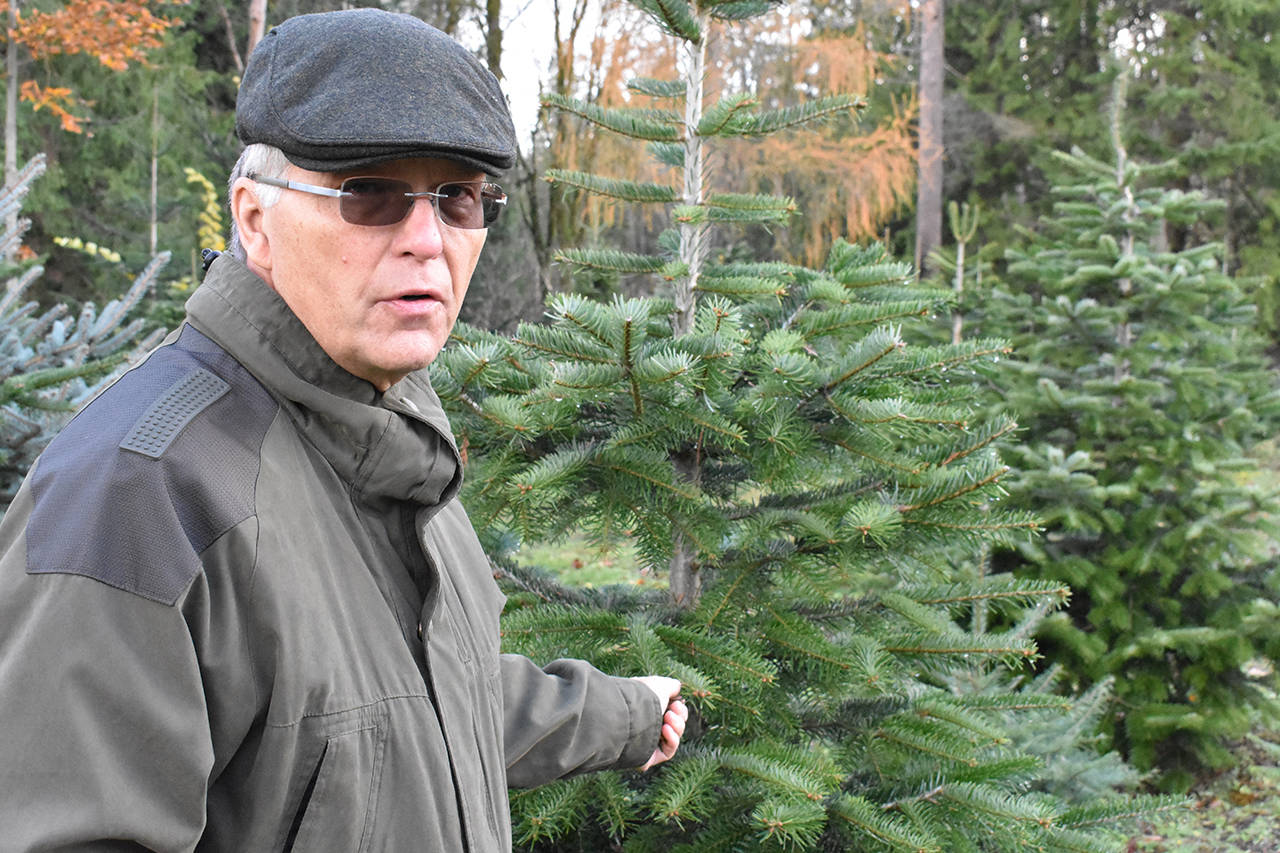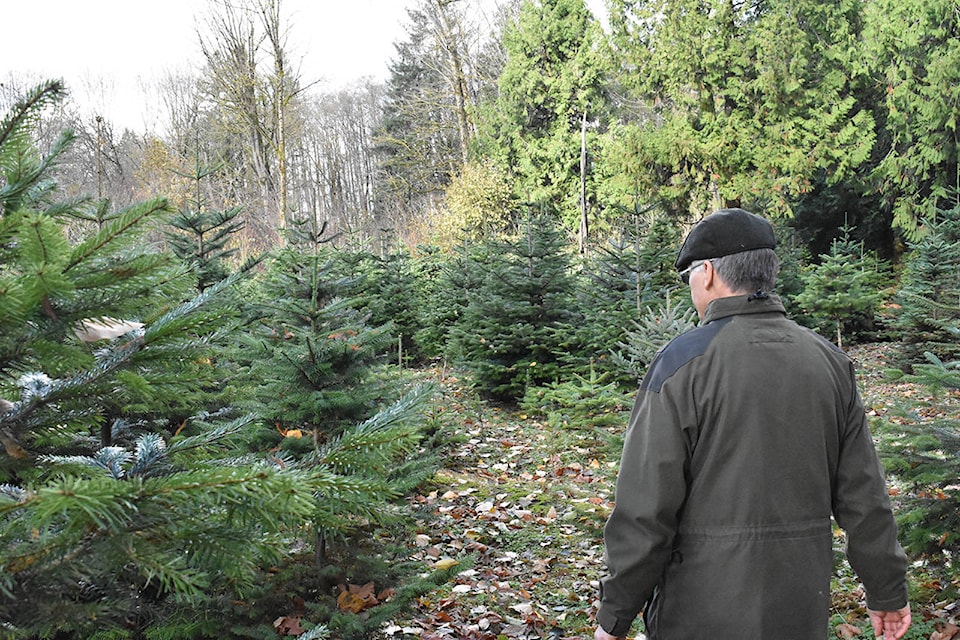Armstrong Creek Christmas Tree Farm is easy to pass by, located down the quiet back road of 190th Street, hidden just around the corner from the busy Potter’s Nursery.
After all, in the early weeks of November, tree-farming hobbyist Peter Bladt is still getting ready for the season. Close to 3,000 trees, hand-pruned back in August, are growing contentedly in their fields — a different layout than a typical tree farm, as Bladt’s plots of firs and spruce are nestled between woodsy valleys and cedar trees.
“It’s not a normal field; it’s not a normal operation,” Bladt said.
Bladt and his wife have been growing Christmas trees on their 5.5 acre Cloverdale property since 1995. Every winter, between 300 and 400 families wander down a path that meanders through Bladt’s back acres, crossing over a burbling salmon stream before passing by two of Bladt’s three tree fields.
“Some people of course complain that they have to walk so far for a Christmas tree,” Bladt said, “but you’ll never forget this tree: cutting it, working hard to get it back to the car.”
Of course, in November, those fields aren’t quite ready for visitors. Bladt still needs to chop down a number of unhappy trees before the start of the holiday tree season — a by-product of Bladt’s natural approach to tree farming, where he doesn’t spray the trees with pesticides throughout the season.
“If I’m a big farmer, and I’m trying to make a living off of it, you have to use different practices,” he said. “That’s just the way it goes.”
The Noble Firs tend to get root rot, a fungus which attacks tree roots in poorly drained soil. Many trees become favourite targets of black-tailed deer during the rutting season, when the deer rub their antlers against the trees, shearing them of branches and bark. Some trees succumb to aphids, and others died during the summer drought.
Last year, Bladt had to cut down around 100 trees; he expects it to be more this year.
“You have all these challenges; it’s not as easy as people think,” he said.
“Like I said, it’s just my hobby. But growing Christmas trees is a science.”
Over the last 22 years, Bladt has found a couple of Christmas tree varieties that can grow well on his property: the Grand Fir, a strongly scented evergreen that is native to B.C.’s coast; the Norway Spruce, a fast-growing tree with wide spaces between its branches; and the Nordmann Fir, a Northeastern Russian tree that Bladt thinks will become the most popular variety on his farm.
“The public at large is not really familiar with that Nordmann Fir type,” he said. “It’s the number one Christmas tree selling in Europe though.”
According to Bladt, Nordmanns have “incredible needle retention.” He even told one story of a woman who kept her Nordmann Fir until July 1 and re-decorated the tree for each new holiday — although by then the needles had all turned brown.
Someday soon, Bladt expects to only be selling those three types of trees. But next year, he may not have any trees to sell at all.
“I have huge, I call them holes,” he said. “You want trees from the seedling stage all the way up to the 10-footers.”
Each year, Bladt plants 350 seedlings to make up for the trees that had been cut down on his farm that holiday season. In March and April, he plants the two-year-old trees around his farm. For the next five to 10 years, he watches as they grow to the popular six-foot height and then sell as Christmas trees.
For five years in a row, Bladt was unable to nurture enough seedlings. One year, the seedlings died because of drought; another year, the rain brought on mildew and death for the seedlings. And two years saw administrative issues with his suppliers that prevented Bladt from getting new trees at all.
“This might be our last Christmas season for two or three years to come,” Bladt said.
He’s already shortened the season this year — he normally opens the last weekend of November, but this year won’t open until the beginning of December — and is bringing in pre-cut trees from other farms.
“When they are all gone, probably next year there’s going to be no trees,” he said. “But I knew that.”
After all, 62-year-old Bladt isn’t in this for the business.
“It’s a nice hobby, good stress relief,” he said. “They don’t talk to me. They don’t poop. They don’t need feed.”
“I look forward to retiring someday, and just do this.”

